Downtown Louisville: What cell phone data tells us about city's rebound
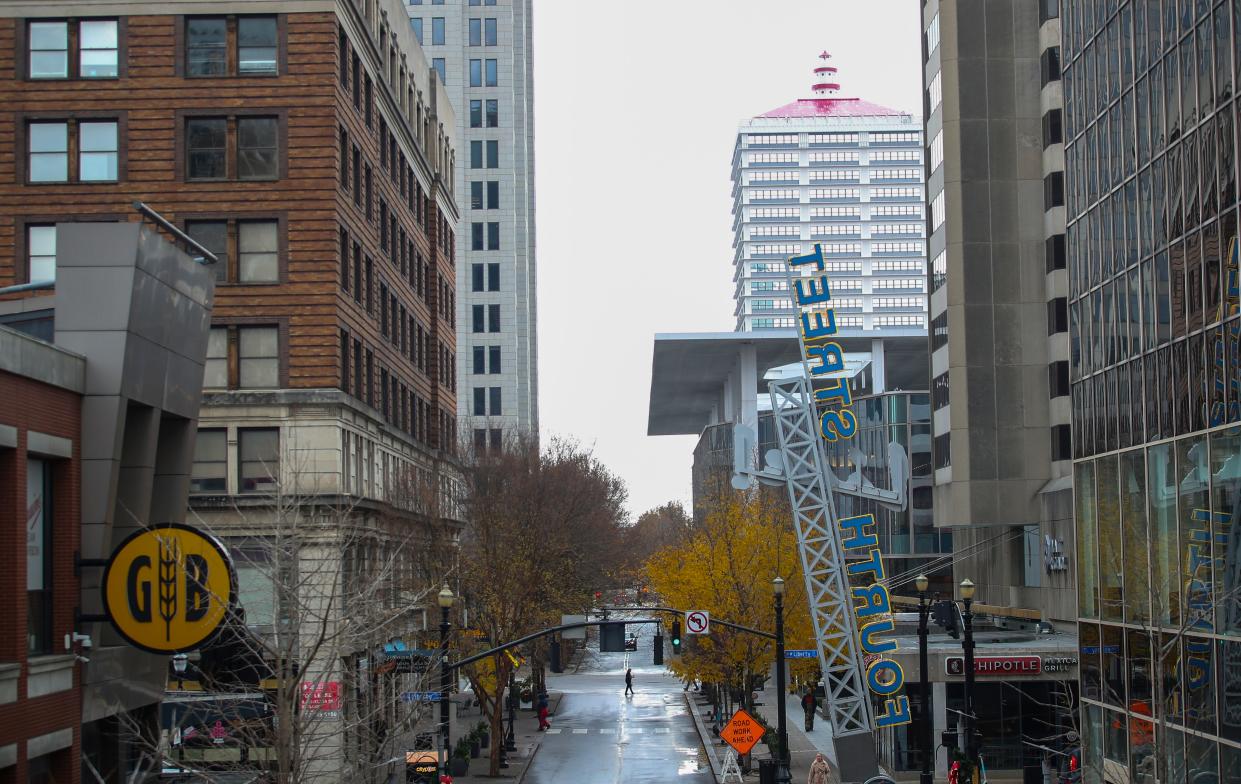
Five years ago at lunchtime, customers spilled onto Fourth Street from Safier Mediterranean Deli as they clamored for their fix of shawarma, falafel and biryani.
But on a recent weekday shortly after noon, only three tables were occupied.
Owner and head chef Youness El Mesyah said business is down a least 30% from before the pandemic.
“We've taken a huge cut,” he said.
El Mesyah added he was not the least bit surprised that a study of foot traffic downtown in the 62 largest North American cities found Louisville has had the second-to-worst recovery from the pandemic — beating out only St. Louis.
So if downtown Louisville seems like a ghost town on weekdays, it is not your imagination.
The research team at the University of Toronto’s School of Cities used cell phone data to compare the density of pedestrian traffic in November 2019 and November 2022 in cities of 350,000 people or more across the United States and Canada.
The researchers calculated the “recovery quotient” of each city and found Louisville only regained 54% of the people who previously visited downtown.
The study found a wide range — from 53% in St. Louis to 103% in Las Vegas, meaning more people crowd Sin City's streets and sidewalks now than before the pandemic.
The report noted the fatal shooting of Breonna Taylor by police in March 2020 and the subsequent racial protests initially drew people downtown (although many businesses were shuttered by the pandemic). Eventually the unrest “negatively impacted” visits to downtown Louisville, the report states.
Remote work, few arts and entertainment venues could be holding Louisville back
But Karen Chapple, lead author of the report and the director of the School of Cities, said its research shows empty streets and offices are "fundamentally about the composition of the local economy, not quality of life or crime factors.”
She said Louisville’s downtown recovery trails some neighbors because a larger share of its business downtown is in finance and insurance — sectors that are conducive to remote work. Conversely, she said, a lower portion is in the arts and entertainment businesses, which are bringing downtown areas in other cities back.
The report notes that at the start of the pandemic, 22 million people lost their jobs, domestic airline flights fell by almost three-quarters and many office workers stopped commuting and switched to working from home. And even as life has gradually returned to malls and neighborhood commercial corridors, the urban core is no longer a bustling center of activity in most cities, the report says.
El Mesyah, the owner of Safier’s, says his business has been hurt by remote work — and four companies whose employees he once served moving out of downtown entirely.
He also says the city should do more to make downtown safe. His business is on the south end of downtown, between Chestnut Street and Broadway, away from Main Street's tourist attractions. He said one of his customers was slapped in the face by a man who then stole her purse.
City officials concede that downtown pedestrian traffic is down compared to pre-COVID days. But city spokesman Kevin Trager said only 4% of the city's crime, including property and violent offenses, are committed in the Central Business District.
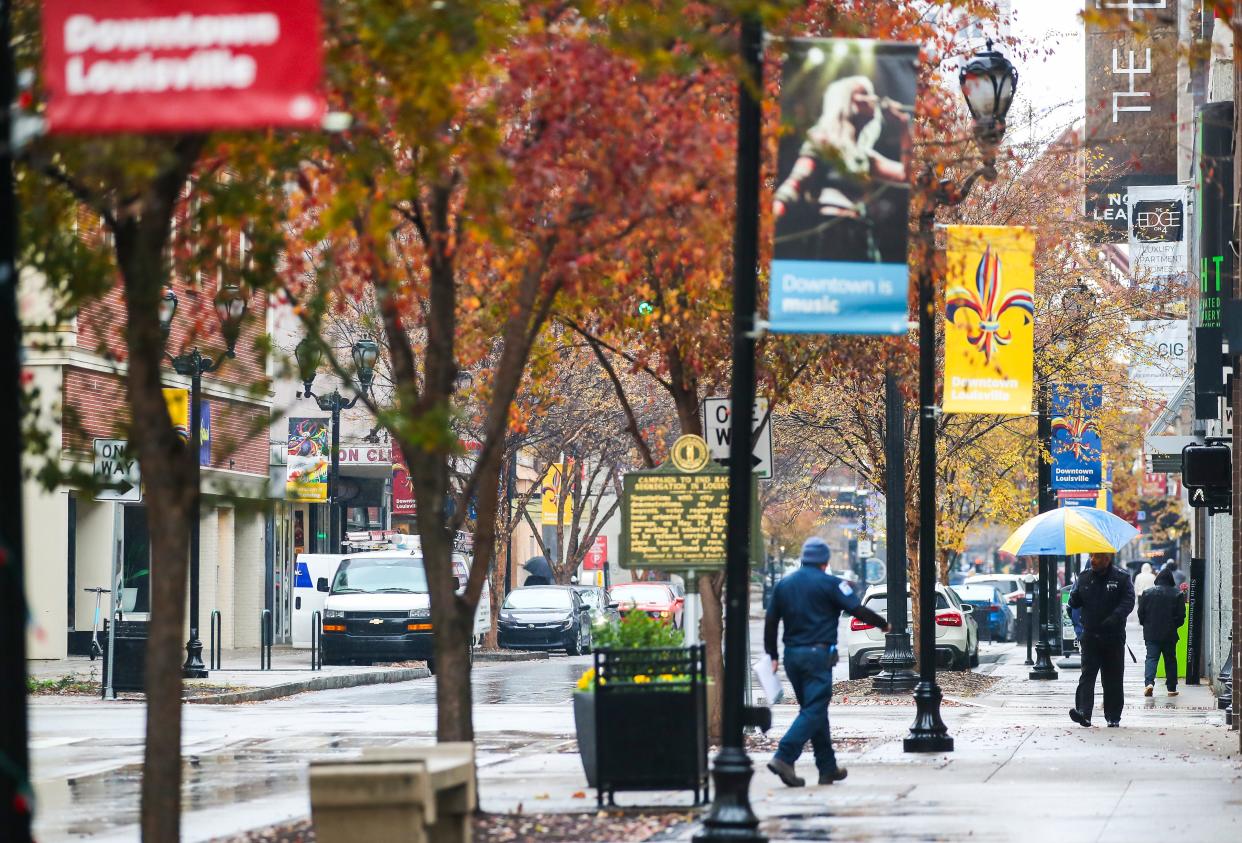
He said the reason pedestrian foot traffic is down is simple: “The are fewer people working downtown today than four years ago.”
Compared with other large cities, Louisville also has relatively fewer people who live downtown, said Rebecca Fleischaker, executive director of the Louisville Downtown Partnership, a private, nonprofit organization that works with the city to promote the business district.
Officials hoping increased police patrols, new gathering spots will entice crowds
Both say the dearth of people on the streets on weekdays is ironic because activity downtown on weekends is "booming," as Trager put it, with tourists and locals enjoying distillery tours, concerts and events.
He and Fleischaker said the city it taking steps large and small to enliven downtown on weekdays.
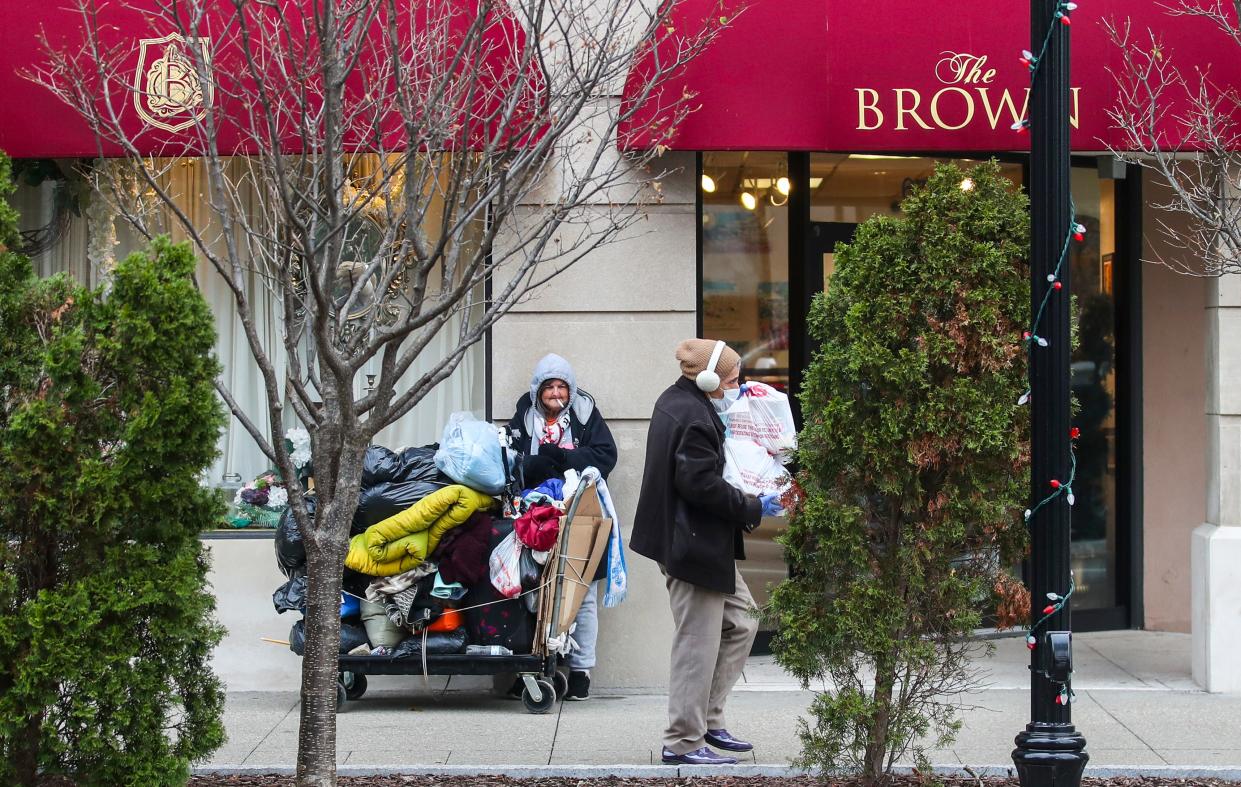
“It is a priority to make downtown the safest and most vibrant, energetic, authentic, clean and green neighborhood in the city,” Trager said.
He said LMPD is focused on increasing officer patrols on foot, all-terrain vehicles, bicycle and horseback. The city, which is down 250 officers, has invested more than $1 million in “new officer recruiting strategies,” and it has enhanced funding of the downtown partnership so it can hire more downtown “ambassadors.”
The city has put out bid requests to develop the land that until recently housed city police headquarters and parking lots behind it.
The city will also ask the Kentucky General Assembly in its 2024 session for $20 million to reimagine and redesign the riverfront Belvedere and $30 million to spur conversion of downtown office buildings to residential and other non-office uses, such as hotels, retail and entertainment.
Fleischaker said the city also hopes to create additional places downtown to "hang out.”
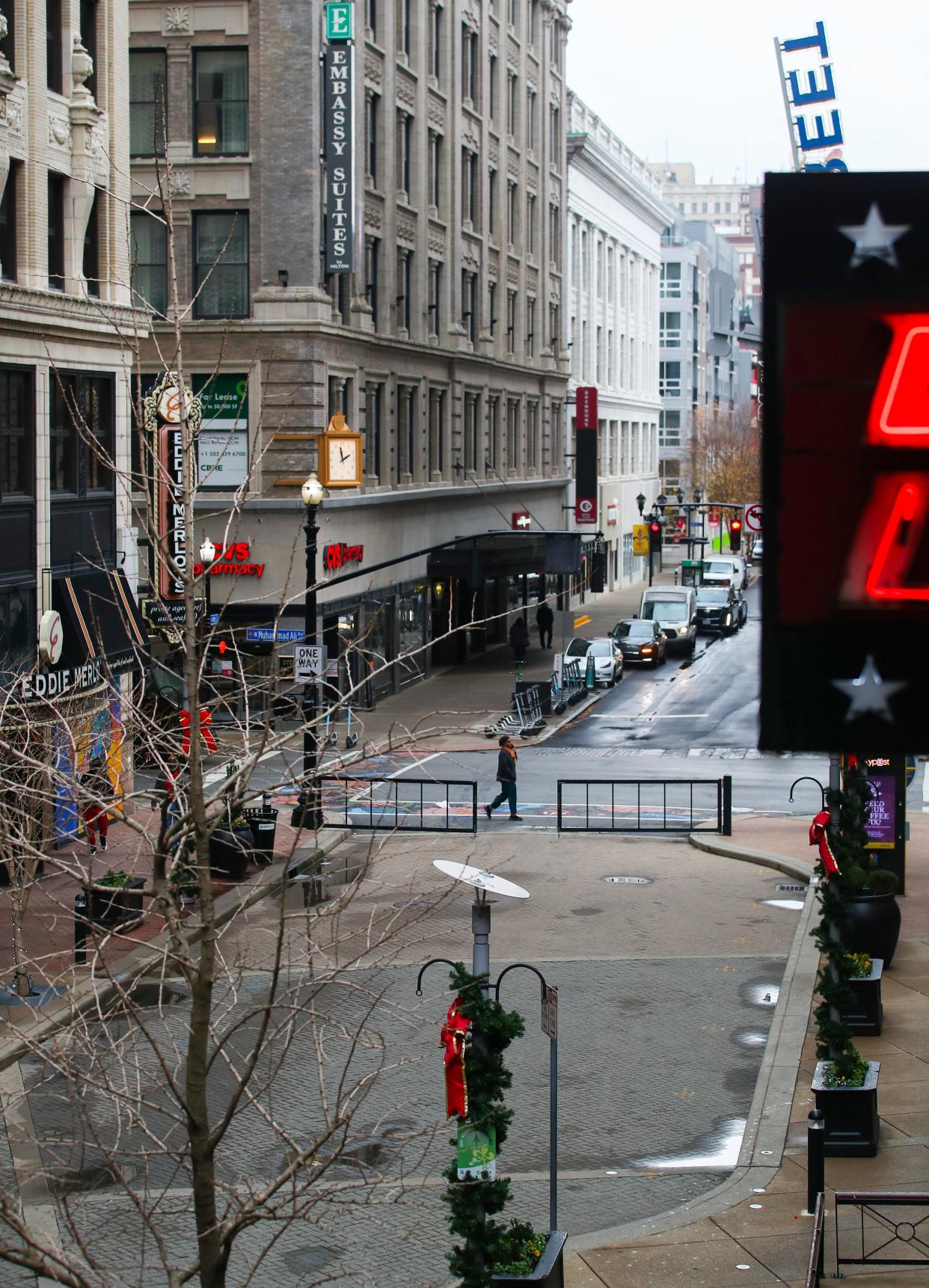
While restaurants that used to depend on lunchtime traffic are struggling to hang on, she said she is encouraged that others like Nami, Neighbors Noodles and CURED Restaurant & Salumeria, are announcing openings nearly every week.
Fleischaker also noted that Derby City Gaming — a historical racing machine entertainment venue — was opening, and the Derby City Hotel at 2nd and Market is coming along quickly. The Dream Hotel and Louisville Gardens are still redevelopment projects on the drawing board, and the pipeline of projects downtown is strong, she said.
The School of Cities report warns that downtowns in some older cities may have to reinvent themselves as remote work becomes permanent. While many employers are beginning to enforce in-person work requirements, the report says tight labor markets for high-skilled workers mean employers have little leverage to force workers' returns.
The report says most downtowns should look to diversify their economies to focus on resilient sectors such as education, health and government. Cities also could help developers convert older office buildings to residential, institutional and recreational uses.
More: Churchill Downs’ new Derby City Gaming Downtown opens in Louisville. Here's a peek inside
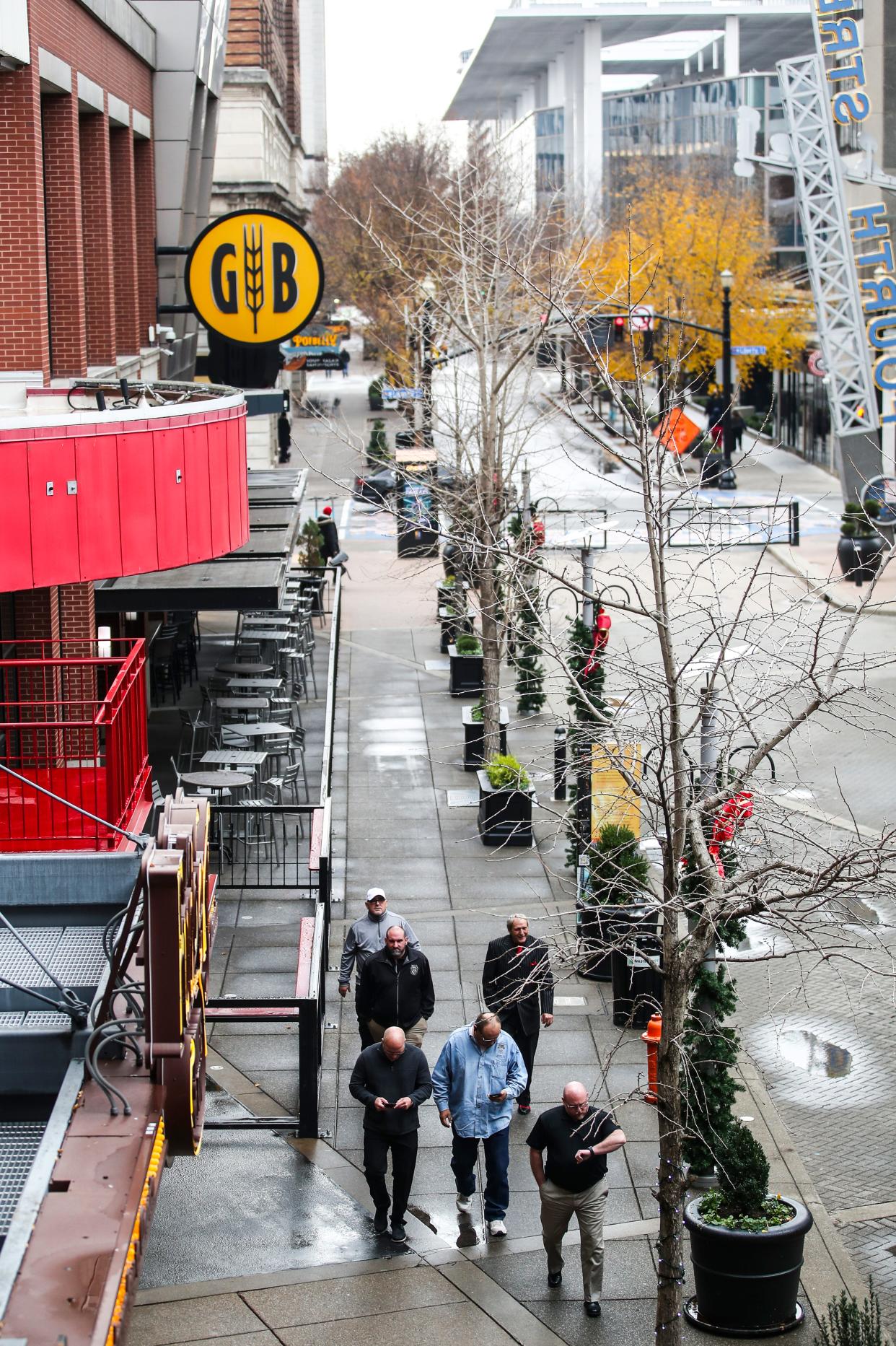
That could mean creating outdoor spaces with cultural events; rethinking streets for transit, bikes and pedestrians; moving parking to the outskirts of downtown; and attracting diverse segments of the population to visit (both in terms of age and race/ethnicity).
Unlike past recoveries, this one may take significant public/private collaboration to accomplish, given the extensive intervention and costs required to remake space.
Reporter Andrew Wolfson can be reached at (502) 396-5853 or awolfson@courier-journal.com.
KY film industry: Lights, camera, action! Soozie Eastman has big dreams for Kentucky's growing film industry
This article originally appeared on Louisville Courier Journal: What cell phone usage tells us about Downtown Louisville foot traffic
